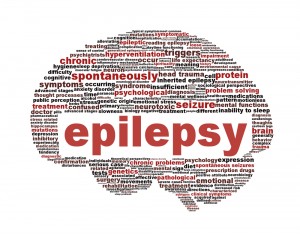-
Minnesota
Mayo Clinic and Partners to Explore New Ways to Predict and Control Seizures
ROCHESTER, Minn. — Mayo Clinic and partners from the University of Pennsylvania School of Veterinary Medicine, the University of Minnesota College of Veterinary Medicine and College of Pharmacy, the Perelman School of Medicine at the University of Pennsylvania, and NeuroVista Corporation have been awarded a $7.5 million grant (U01) from the National Institute of Neurological Disorders and Stroke, a division of the National Institutes of Health (NIH). The research involves studying new ways to predict and control epileptic seizures in dogs and people.
VIDEO ALERT: Journalists: video of a canine seizure is available at the Mayo Clinic News Blog.

Epilepsy affects approximately 1 percent of the human population, with an estimated 50 million people worldwide currently suffering from the disorder. The hallmark of epilepsy is the seizure — a sudden and often violent event that strikes patients without warning. The goal of the research is to use information gleaned from real-time electroencephalograms (EEG) to consistently detect impending seizures, and develop methods of preventing these seizures through use of fast-acting drug therapies.
The grant awards $1.5 million a year for up to five years. The principal investigators of the studies are Greg Worrell, M.D., Ph.D., Mayo Clinic; Ned Patterson, D.V.M., Ph.D., University of Minnesota College of Veterinary Medicine; Jim Cloyd, Pharm.D., University of Minnesota College of Pharmacy; Charles Vite, D.V.M., Ph.D., University of Pennsylvania School of Veterinary Medicine; Brian Litt, M.D., Perelman School of Medicine at the University of Pennsylvania; and Kent Leyde, chief technology officer of NeuroVista Corporation of Seattle, Washington.
NeuroVista, a Seattle based company developing novel technologies for the management and treatment of epilepsy, has developed an implantable device system that continuously collects and analyzes EEG data to detect impending seizures. The system uses an external patient-carried device with a very simple interface—three colored lights—to indicate the risk of an impending seizure to the patient. The system is currently undergoing study in clinical trials in human patients being conducted in Australia. The NIH-funded research will involve applying the NeuroVista technology to dogs with naturally occurring epilepsy, and extending the technology by using it to guide the administration of fast-acting drugs to prevent seizures. It is hoped that this work will translate to a similar solution for human patients.
"This collaboration with three major academic centers creates a powerful engine for innovation in the treatment of epilepsy," says Kent Leyde. "We are excited about the opportunity to advance the promising research in this field and translate what we learn in canines into the clinical environment."
"This epilepsy management system technology shows promise for detecting and predicting seizures in dogs and people" notes Doug Sheffield, V.M.D., Ph.D., vice president of clinical research for NeuroVista. "This technology has the potential to profoundly impact epilepsy research and patient care."
"Despite over 15 drugs currently available for the chronic treatment of epilepsy, approximately 25-35 percent of people continue to have persistent and serious seizures even when receiving the most advanced medical care," adds Jim Cloyd of the University of Minnesota College of Pharmacy. "For those whose epilepsy is well-controlled by medication, they must often cope with significant and debilitating side effects."
"The constant fear and uncertainty as to when the next seizure is going to strike often exacts a serious toll on the quality of life for patients and their families. The problem for patients with epilepsy is they actually only have seizures a small percentage of their lifetime, but they're on medication continuously," says Ned Patterson, associate professor of veterinary medicine.
"There is a real need for technology to inform patients about when seizures are likely to occur and to alert caregivers when seizures strike," says co-investigator Brian Litt, a neurologist and bioengineer at the Perelman School of Medicine at the University of Pennsylvania.
While the long-range goal of the studies is to find better ways to treat human patients, Charles Vite, assistant professor of veterinary neurology says, "as I remind everyone, I am a veterinarian, and this technology will be of value to animals as well." Vite and Patterson each treat hundreds of dogs with epilepsy at their respective university veterinary clinics.
"Our goal is reliable seizure forecasting in conjunction with timely, effective short-term intervention, and this could lead to more effective treatment for both canine and human epilepsy," adds Greg Worrell, a neurologist at Mayo Clinic.
Media Contact: Brian Kilen, 507-284-5005 (days), newsbureau@mayo.edu







